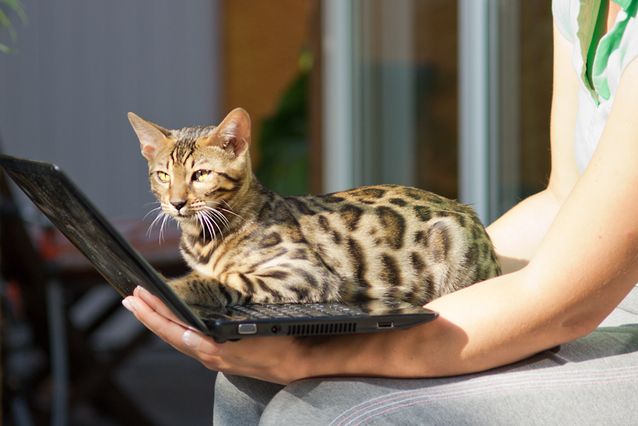There were a few interested parties not long after the advert for Hazel went live.
However, there was still the small matter of having her neutered.
We’d decided it was best this was done and she was fully recovered before letting her go, something we communicated to those potential buyers.
Anaesthetic
Whilst writing the article ‘7 Things You MUST Know Before Owning A Bengal Cat‘, one of the contributing breeders alerted me to the fact that Bengals can have problems with Ketamine which can be used in conjuction with other drugs as an anaesthetic or sometimes an analgesia.
We contacted the vet and found Ketamine was not used.
But worth checking before your Bengal undergoes any procedure that is likely to need general anaesthetic.
See this article on Ketamine and Cats, this Bengal Health Info sheet and this page that lists Common Medical Issues for Bengal Cats.
Rules To Follow Before
The vet recommending the following guidelines (applicable to all cats) be adhered to:
· No food before 9pm on the day before surgery
This was either to prevent a risk of vomiting/inhalation of digested food during anaesthesia or recovery or to stop your cat turning into some kind of gremlin type monster…
· Keep your cat indoors
So that you know where they are when it’s time for their appointment. This was pretty easy with Hazel being a housecat.
· Transport in a secure, lined carrier ideally with a blanket over the outside
Some of this was touched on in the blog post ‘The Cat, The Car and The Carrier,’ although our carrier turned out not to be entirely secure…
Neutering Day
Pretty uneventful, well for us at least.
Hazel wasn’t completely happy being in the car/carrier, but hopefully some of her prior experiences had reduced her stress levels somewhat.
Surprisingly she was fearless at the vets and easy to handle.
She was there for approximately 4 hours and was returned with a stitched-up wound and shaved side which- which now looked a lot like a chicken thigh.
Hazel though, was feeling the effects of the day and more probably, the anaesthetic, as she was understandably lethargic and appeared to be feeling sorry for herself.
Rules To Follow After
Post-surgery, the vet advised the following:
· Checking the wound for discharge
· Ensuring there were no new lumps/additional swelling
· Checking the wound was healing and that there was no bleeding
· Keeping her indoors for 10 days
These were straight forward enough, and she was due a follow-up appointment in 10 days to make sure everything was healing appropriately.
The last recommendation was to “keep her calm and prevent her from running around.”
To which my response was “no chance.”
Futher Reading:




